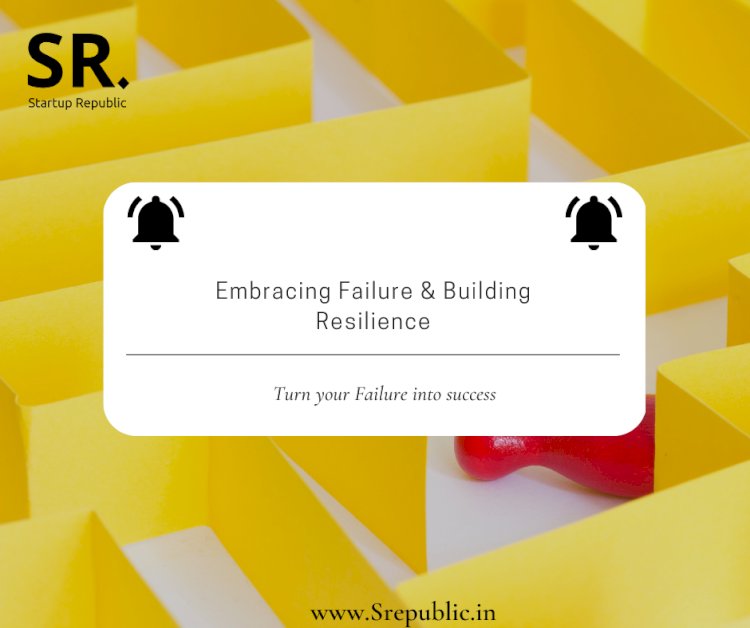
The Power of Differentiation: Standing Out in a Crowded Market
In today’s fast-paced business world, it often feels like every market is a bustling marketplace, overflowing with countless products, services, and companies all vying for the same customers. From coffee shops on every corner to online stores selling similar gadgets, the competition is fierce. So, how can your business not just survive, but truly thrive and achieve lasting success amidst this constant clamor?
The answer lies in differentiation.
Differentiation is the art and science of making your business, product, or service uniquely attractive to your target customers, setting you apart from your competitors. It’s about giving people a compelling reason to choose you over everyone else. In this comprehensive guide, we’ll explore the immense power of differentiation, how to discover your unique edge, and practical ways to make your business shine in even the most crowded markets.
What Exactly is Differentiation? (It’s Simpler Than You Think!)
At its core, differentiation is about being distinct and valuable. It’s not just about being "different for the sake of being different." It’s about offering something that your competitors don’t, or offering it in a way that is significantly better, more appealing, or more tailored to a specific need.
Think of it this way:
- Imagine a street with five identical pizza shops. They all sell the same types of pizza, at the same price, with the same service. Which one would you choose? Probably the closest, or whichever one has the shortest line. There’s no real reason to prefer one over the others.
- Now imagine one of those shops offers:
- Gluten-free, organic ingredients (for health-conscious customers).
- A unique "build-your-own-pizza" interactive experience.
- Delivery by drone in 15 minutes, guaranteed.
- A cozy, family-friendly atmosphere with live music on weekends.
Suddenly, that one shop stands out! It has differentiated itself by offering something unique and valuable that appeals to specific customer groups. That’s the power of differentiation.
Why is Differentiation So Important in Today’s Market?
In a crowded market, differentiation isn’t just a good idea; it’s often the key to survival and sustainable growth. Here’s why it’s absolutely essential:
- Avoids Price Wars: When you’re just like everyone else, the easiest way to compete is often on price. This leads to a "race to the bottom," where everyone lowers prices, squeezing profit margins and making it harder for any business to thrive. Differentiation allows you to justify your pricing, as you’re offering unique value.
- Attracts the Right Customers: When you stand out, you don’t just attract any customer; you attract customers who specifically value what makes you unique. These customers are often more loyal and less sensitive to price changes.
- Builds Strong Brand Loyalty: Customers who connect with your unique offering or brand identity are more likely to become repeat buyers and brand advocates. They’ll choose you even if a slightly cheaper option exists because they trust and prefer what you offer.
- Increases Profitability: With a distinct offering, you can often command higher prices, leading to better profit margins. Your unique value allows you to escape the commodity trap.
- Reduces Marketing Costs: When you have a clear, unique message, your marketing efforts become more focused and effective. It’s easier to explain why customers should choose you, making your advertising more impactful.
- Creates a Competitive Barrier: Once you’ve established a strong differentiator, it becomes harder for new competitors to enter the market and for existing ones to copy your success. You’ve built a unique space for yourself.
- Enhances Brand Recognition: A unique identity helps your business become more memorable and recognizable in the minds of consumers.
Discovering Your Unique Selling Proposition (USP)
Your Unique Selling Proposition (USP) is the core message of your differentiation. It’s that one compelling reason why your customers should buy from you instead of your competitors. Finding your USP isn’t always easy, but it’s a crucial step.
Here’s a simple process to help you uncover your business’s superpower:
-
Understand Your Target Customer Inside Out:
- Who are they? (Demographics: age, location, income, etc.)
- What are their biggest problems or pain points that your product/service solves?
- What are their desires, hopes, and aspirations?
- What do they value most when making a purchase decision? (e.g., speed, quality, price, customer service, convenience, ethical practices?)
- Tip: Conduct surveys, interviews, or simply listen to customer feedback and reviews.
-
Analyze Your Competitors – What Are They Doing Well (and Not So Well)?
- Who are your direct competitors?
- What are their strengths? What do they do well?
- What are their weaknesses? Where do they fall short? (This is often where your opportunity lies!)
- How do they position themselves? What’s their USP?
- Tip: Visit their websites, read their reviews, try their products/services if possible. Be honest and objective.
-
Identify Your Business’s Strengths and Unique Capabilities:
- What are you genuinely good at?
- What resources or expertise do you have that others don’t?
- What unique processes or technologies do you use?
- What’s your company’s story or philosophy?
- Tip: Brainstorm with your team. What do customers consistently praise you for?
-
Find the Intersection: Your USP Lives Here!
- Look for the overlap between what your customers need, what your competitors aren’t doing well, and what your business excels at.
- This sweet spot is your potential USP. It’s a unique value you can deliver that truly matters to your target audience and that your competitors aren’t effectively providing.
-
Test and Refine Your USP:
- Once you have a potential USP, try articulating it in a clear, concise sentence.
- Does it resonate with your target audience?
- Is it believable?
- Is it memorable?
- Can you consistently deliver on this promise?
- Example USP: "We deliver gourmet meals to your door in under 30 minutes, guaranteed fresh or it’s free."
Key Areas to Differentiate Your Business
Differentiation isn’t a one-size-fits-all strategy. There are many avenues you can explore to make your business stand out. Here are some common and effective areas:
1. Product/Service Differentiation
This is often the first thing people think of. It’s about making your actual offering superior or unique.
- Unique Features & Functionality: Does your product do something others don’t? Is it simpler, more powerful, or more versatile?
- Example: Tesla’s electric vehicles with long range and self-driving capabilities.
- Superior Quality: Are your materials, craftsmanship, or service standards exceptionally high?
- Example: High-end luxury brands like Rolex or Hermès, known for meticulous quality.
- Innovative Design: Is your product visually appealing, intuitive to use, or ergonomically superior?
- Example: Apple products (iPhones, MacBooks) are renowned for their sleek design and user-friendliness.
- Performance & Reliability: Does your product consistently outperform competitors or last longer?
- Example: Certain industrial machinery or software known for their uptime and robust performance.
2. Price Differentiation (Handle with Care!)
While competing on price can be a race to the bottom, price as part of a value proposition can be a differentiator.
- Premium Pricing for Perceived Value: Positioning yourself as the high-end, luxury, or best-in-class option allows you to charge more. Customers pay for the superior experience, quality, or prestige.
- Example: Starbucks (premium coffee experience) vs. a local diner (standard coffee).
- Cost Leadership (Efficient Operations): If you can genuinely offer the lowest sustainable price due to highly efficient operations, this can be a powerful differentiator, but it’s hard to maintain.
- Example: Walmart or IKEA, known for their low prices due to massive scale and efficient supply chains.
- Value for Money: Offering a compelling balance of quality and affordability. Not the cheapest, but the best value for the price.
- Example: Costco, where members pay for access to bulk goods at competitive prices.
3. Customer Experience Differentiation
In an age where products are increasingly similar, how you treat your customers can be your strongest differentiator.
- Exceptional Customer Service: Going above and beyond to assist customers, resolve issues quickly, and make them feel valued.
- Example: Zappos, famous for its incredible customer service, including free returns and 365-day return policy.
- Personalization: Tailoring products, services, or communication to individual customer needs and preferences.
- Example: Netflix or Amazon, using algorithms to recommend content or products based on past behavior.
- Ease of Use/Convenience: Making it incredibly simple and effortless for customers to do business with you.
- Example: Uber (easy ride-hailing), Amazon’s one-click ordering.
- Community Building: Creating a sense of belonging and connection among your customers.
- Example: Harley-Davidson’s loyal rider community.
4. Brand Image & Identity Differentiation
This is about the emotional connection and perception you create in the minds of your customers.
- Brand Story & Values: Communicating what your brand stands for, its mission, and its journey in a compelling way.
- Example: Patagonia, known for its strong commitment to environmental sustainability.
- Personality & Tone: Is your brand playful, serious, rebellious, sophisticated, friendly? This influences how customers relate to you.
- Example: Innocent Smoothies (playful and quirky marketing) vs. a serious financial institution.
- Emotional Connection: Evoking specific feelings or aspirations through your branding and messaging.
- Example: Nike ("Just Do It") inspiring athleticism and achievement.
5. Niche Market Differentiation
Instead of trying to appeal to everyone, focus intensely on a very specific segment of the market and become the best solution for them.
- Specialization: Becoming an expert in a particular area or serving a highly specific group of customers.
- Example: A law firm specializing only in intellectual property for tech startups.
- Example: A bakery that only makes gluten-free, vegan desserts.
- Geographic Focus: Dominating a specific local area or region.
- Example: A local restaurant known as "the best BBQ joint in town."
6. Process Differentiation
This involves optimizing your internal operations to deliver value in a unique way.
- Speed & Efficiency: Delivering products or services faster than anyone else.
- Example: Domino’s pizza (early promise of 30-minute delivery).
- Proprietary Technology/Methodology: Using a unique system or technology that gives you an edge.
- Example: FedEx’s sophisticated logistics and tracking system.
Implementing Your Differentiation Strategy: Making it Real
Finding your differentiator is only half the battle. The real power comes from consistently implementing and communicating it.
-
Clearly Communicate Your Differentiator:
- Your USP should be woven into every piece of your marketing and communication – your website, social media, advertisements, and even your sales pitch.
- Make it obvious why customers should choose you. Don’t make them guess!
- Action: Write down your USP and share it with your entire team. Ensure everyone understands and can articulate it.
-
Deliver on Your Promise, Every Single Time:
- Differentiation is not just about what you say; it’s about what you do. If you promise superior quality, you must deliver it. If you promise exceptional service, your team must provide it.
- Inconsistency will quickly erode your credibility and negate your differentiation efforts.
- Action: Establish clear standards and training for how your differentiator is delivered at every customer touchpoint.
-
Be Consistent Across All Touchpoints:
- Your brand message, customer experience, and product quality should be consistent whether a customer interacts with you online, in person, or over the phone.
- Action: Audit your customer journey to identify any inconsistencies and rectify them.
-
Embrace Innovation and Evolve:
- Markets are dynamic, and competitors will try to copy your success. What differentiates you today might become standard tomorrow.
- Continuously look for ways to innovate, improve, and find new ways to stand out. Stay ahead of the curve.
- Action: Dedicate time and resources to R&D, market research, and gathering customer feedback to identify future opportunities for differentiation.
-
Get Your Team On Board:
- Every employee, from the CEO to the front-line staff, plays a role in delivering your unique value. They need to understand and embody your differentiator.
- Action: Train your staff, empower them, and reward them for upholding your unique promise.
Common Mistakes to Avoid When Differentiating
While differentiation is powerful, it’s possible to make missteps. Here are a few common pitfalls to steer clear of:
- Differentiating for Differentiation’s Sake: Don’t be different just to be different. Your differentiator must be valuable to your target customer and sustainable for your business.
- Not Communicating Your Differentiator: Having a unique offering is useless if your customers don’t know about it. Shout it from the rooftops (in a tasteful way!).
- Failing to Deliver on the Promise: This is the quickest way to lose trust and damage your brand. Authenticity is key.
- Ignoring Competitors: While you focus on your unique path, don’t become blind to what your competitors are doing. They might innovate or try to copy your successful strategies.
- Being Static: The market constantly changes. What made you unique yesterday might be commonplace tomorrow. Always be thinking about your next differentiator.
Conclusion: Your Unique Path to Success
In a world where consumers are overwhelmed with choices, the power of differentiation cannot be overstated. It’s not just about having a slightly different product; it’s about crafting a unique identity, delivering unmatched value, and building genuine connections with your customers.
By understanding your audience, analyzing your competition, identifying your strengths, and consistently delivering on a unique promise, you can transform your business from just another option into the clear choice. Embrace the power of differentiation, and watch your business not just survive, but truly stand out and flourish in even the most crowded of markets. Start today by asking yourself: What makes us truly different, and why should our customers care? The answer to that question is your roadmap to lasting success.



Post Comment